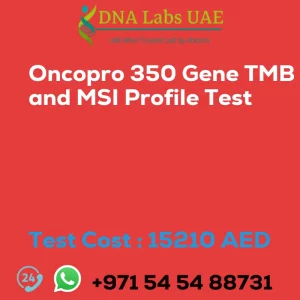IMMUNOHISTOCHEMISTRY PAX-5 Test
Test Name: IMMUNOHISTOCHEMISTRY PAX-5 Test
Components: PAX-5 protein detection
Price: 470.0 AED
Sample Condition: Submit tumor tissue in 10% Formal-saline OR Formalin fixed paraffin embedded block. Ship at room temperature. Provide a copy of the Histopathology report, Site of biopsy and Clinical history.
Report Delivery: Sample Daily by 6 pm; Report Block: 5 days, Tissue Biopsy: 5 days, Tissue large complex: 7 days
Method: Immunohistochemistry
Test type: Cancer
Doctor: Oncologist, Pathologist
Test Department: DNA Labs UAE
Pre Test Information
Provide a copy of the Histopathology report, Site of biopsy and Clinical history.
Test Details
The PAX-5 test is an immunohistochemistry (IHC) test used to detect the presence of PAX-5 protein in tissue samples. PAX-5 is a transcription factor that is essential for the development of B cells, which are a type of white blood cell involved in the immune response.
The PAX-5 test is primarily used in the diagnosis of lymphomas, particularly those derived from B cells. It can help differentiate between different types of lymphomas and can also be used to confirm the presence of B-cell markers in cases where the diagnosis is uncertain.
During the test, a tissue sample, usually obtained through a biopsy or surgical procedure, is processed and embedded in paraffin. Thin sections of the tissue are then mounted onto glass slides and subjected to a series of steps to prepare them for immunohistochemical staining.
The PAX-5 antibody is applied to the tissue sections and allowed to bind specifically to the PAX-5 protein present in the tissue. This is followed by a secondary antibody that is conjugated to an enzyme or a fluorescent dye, which will bind to the primary antibody. This allows for the visualization of the PAX-5 protein in the tissue.
The stained tissue sections are then examined under a microscope by a pathologist, who will evaluate the intensity and pattern of PAX-5 staining. A positive result indicates the presence of PAX-5 protein in the tissue, suggesting the presence of B cells or B-cell-derived lymphoma.
Overall, the PAX-5 test is a valuable tool in the diagnosis and classification of lymphomas, helping to guide appropriate treatment decisions for patients.
| Test Name | IMMUNOHISTOCHEMISTRY PAX-5 Test |
|---|---|
| Components | |
| Price | 470.0 AED |
| Sample Condition | Submit tumor tissue in 10% Formal-saline OR Formalin fixed paraffin embedded block. Ship at room temperature. Provide a copy of the Histopathology report, Site of biopsy and Clinical history. |
| Report Delivery | Sample Daily by 6 pm; Report Block: 5 days Tissue Biopsy: 5 days Tissue large complex : 7 days |
| Method | Immunohistochemistry |
| Test type | Cancer |
| Doctor | Oncologist, Pathologist |
| Test Department: | |
| Pre Test Information | Provide a copy of the Histopathology report, Site of biopsy and Clinical history. |
| Test Details |
The PAX-5 test is an immunohistochemistry (IHC) test used to detect the presence of PAX-5 protein in tissue samples. PAX-5 is a transcription factor that is essential for the development of B cells, which are a type of white blood cell involved in the immune response. The PAX-5 test is primarily used in the diagnosis of lymphomas, particularly those derived from B cells. It can help differentiate between different types of lymphomas and can also be used to confirm the presence of B-cell markers in cases where the diagnosis is uncertain. During the test, a tissue sample, usually obtained through a biopsy or surgical procedure, is processed and embedded in paraffin. Thin sections of the tissue are then mounted onto glass slides and subjected to a series of steps to prepare them for immunohistochemical staining. The PAX-5 antibody is applied to the tissue sections and allowed to bind specifically to the PAX-5 protein present in the tissue. This is followed by a secondary antibody that is conjugated to an enzyme or a fluorescent dye, which will bind to the primary antibody. This allows for the visualization of the PAX-5 protein in the tissue. The stained tissue sections are then examined under a microscope by a pathologist, who will evaluate the intensity and pattern of PAX-5 staining. A positive result indicates the presence of PAX-5 protein in the tissue, suggesting the presence of B cells or B-cell-derived lymphoma. Overall, the PAX-5 test is a valuable tool in the diagnosis and classification of lymphomas, helping to guide appropriate treatment decisions for patients. |








